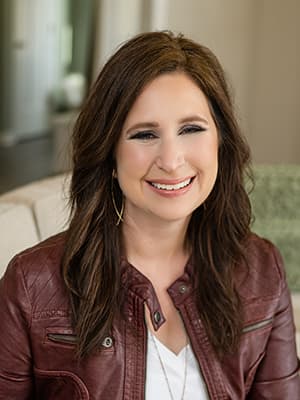
Poor lighting, crooked lines, and awkward angles make listing photos look amateurish. But just how big of a difference do these flubs make? Photography pros share “good” and “bad” images that exemplify the rules of high-quality photos, along with tips for capturing the perfect picture.
1. Be cognizant of the position of the sun.

A front exterior shot of a home or building is often the first image buyers see in an online MLS listing. Be aware of the time of day when you shoot this image. Julie Legge, a professional photographer with Charlotte Real Estate Photos in Charlotte, N.C., captured two images of the same home to show how different times of day can skew the quality of a photo. The photo to the left shows the exterior with the sun directly overhead, which can make a home appear dark. It’s best to shoot when the sun shines directly onto the front of house. Adjusting the height of your camera also can enhance a photo. For example, in the photo to the left, the home was shot at ground level. In the image to the right, Legge shoots from an elevated position—using a step ladder—to reveal more of the home and yard.
2. Interior photos should not compromise window views.

In an interior shot of a home, what’s on the outside matters as much as what’s inside. It can be difficult to focus on both the interior and the outside view through the windows. When you set the camera’s focus to the interior, the views from the window can appear blurry or dark, says Brian Balduf, cofounder and chairman of national real estate photography company VHT Studios. But if you focus on the outside view, the interior shot can appear darker. It’s possible to capture both without compromising the photo. Professional photographers use high dynamic range, or HDR, to correct this. In the photo to the right, VHT photographers used HDR imaging to layer multiple exposures of the same room in different lighting scenarios to create one photo where you can easily see both the inside and outside.
3. Think of a wider view with every shot.

The camera lens you choose will have an impact on how much detail you can get into a shot. A photo taken with a wide-angle lens, such as the one at right, can capture more of a room than a standard lens. “While tighter shots can show more detail, a real estate agent can communicate more about the space in a single wide-angle photo,” Legge says. In the case of the above photos, “the wide-angle shot shows more of the hardwood floors and the upgraded ceiling, the large window in the kitchen, and the natural view outside.”
4. Find the best position in a room to shoot from.

The position from which you take a photo in a room affects the perception of how big or small the room is. In the photo at left, the image of a great room is captured from behind the sofa, and the furniture distracts from the space and makes the room appear tighter (even when a wide-angle lens was used). But when shooting from the side of the sofa, the space appears larger.

Another set of photos of a bedroom shows the importance of the “three-wall rule,” Balduf says. Try to frame a photo so you capture three walls in a room, which can provide greater balance and scale. Taking a photo from a doorway often offers a view of only one corner of a room and can make it feel smaller. Experiment with different angles in trying to capture three walls (a wide-angle lens likely will be necessary).
5. Smartphone photos kill the lighting.

Don’t underestimate the power of great lighting. Both photos above were shot with the room’s lights turned on and curtains opened to reveal natural light. So why the difference in brightness? “The ‘bad’ photos were shot with an iPhone,” Balduf says. “The well-lit photograph was shot with a DSLR camera, as well as an external flash. The DSLR handles any low-light setting much better than any cell phone can.” Photo editing software also can be used to manually brighten photographs post-production.
6. A tripod can lower the risk of human error.

Crooked photos are jarring, which is why it’s best to use a tripod for more even shots. The photograph at left was taken without a tripod, while the photo at right was taken with a tripod. “Not using a tripod can also degrade the sharpness of a photograph, since the camera often shakes when the person shoots it,” Balduf says. He stresses that a tripod not only keeps the camera straight but also helps eliminate blurriness.









